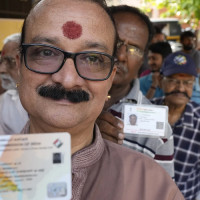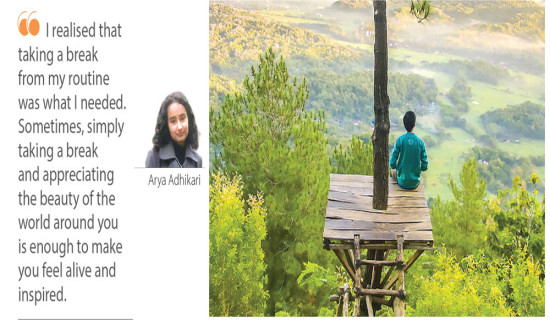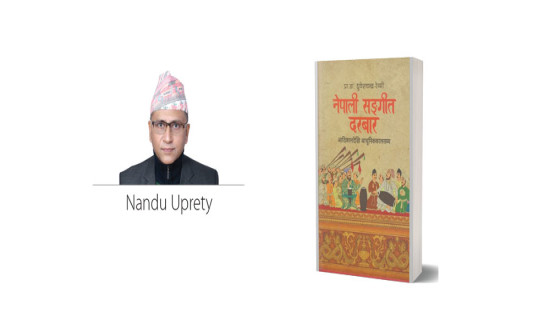- Saturday, 27 April 2024
Celebrating Teej With Gusto !
Benazir Ahmed Siddique
Due to the outbreak and spread of the COVID pandemic, the festival of Teej could not be celebrated properly during the last couple of years. But this year, the festival is being celebrated with much gusto, thanks to curbing in the spread of the deadly disease.
Importance
However, Teej is of huge importance in all Hindu families of Nepal. The way of celebration is quite different from other festivals because only women celebrate this with fasting, worship, singing, and dancing. I am always a part of this celebration with family and friends. Teej will kick off on 30 August 2022.
On the day of Teej, there is a tradition of worshiping in the temple and entertaining. While on the last day of Rishi Panchami (Bhadra Shukla Panchami), married women fast for the longevity of their husbands and unmarried women fast to find a suitable groom.
Teej is a good occasion for singing, dancing, and interacting about good or bad experiences of life. Those women who never come out from home can connect with friends. Through interactions, they are able to build confidence which helps to release suppressed emotions.

The festival is based on Hindu mythology, according to which Parvati, the daughter of Himalaya, devoted her life to Lord Shiva. She admired him and wanted to marry him, but her father promised her marriage to God Vishnu. Parvati showed her serious penance and dedication to Shiva.
Consequently, one day, Shiva noticed her sincere efforts and accepted her marriage proposal. Commemorating the same, on the day of Teej, women worship Lord Shiva and Goddess Parvati and take fast, conventionally praying for the long life of their husbands whereas unmarried girls fast with a wish for a good husband as a blessing of Lord Shiva.
On the same day, women enjoy their time wearing new traditional clothes, using makeup, and singing and dancing. Meanwhile, there is another festival called Rishi Panchami that falls two days after the Teej festival, and it is also considered a part of the same celebration by many. On this day, women worship Saptarshi and listen to stories related to menstruation.
According to the story, women who are menstruated are impure and the worship that day purifies them.
These holy stories set some boundaries and limitations for women: if women do not follow these rules, it will be a sin. Hence, paradoxically, the celebration is all focused on women’s happiness, but it also has some practices that control everything for everyday practice. In each step of celebrating Teej, women have to think about family, husbands, children, and even their health like menstruation.
During this festival of religious rituals, married and unmarried women celebrate by thinking of their birth house and sharing their sorrows. Especially, dressed in red clothes, they express the stories of suffering and pain they have seen at home and abroad throughout the year through songs.
Nowadays, men also join Teej musical programs, but I have never seen men join women at the Pashupati temple for worship. Also, I do not know many men who have observed fast for the long life of their wives and would-be wives and for the joy and happiness of the family. We can see the power of relations in our everyday practice and cultural celebrations also.
If any man doing the same things as women, like worship, fasting for the long life and happiness of the family, it sounds unnatural. Hence, it is interesting to talk about how mythological festivals such as Teej reflect power relations existing in society so as to limit the tools of resistance against the male-dominating society.
Songs And Dance
As we know Teej songs speak about women’s conditions like what kind of treatment they faced in everyday practice, yet, there are tools of resistance such as songs and other group interactions. Resistance is a challenge to dominating power in any form.
Resistance includes a different level of action to speak against the oppressive system. In a patriarchal society, women need to stay in their husbands’ houses after marriage. The transfer from one place to another creates an identity crisis in their own (husband’s) home.
The crisis might increase with social judgments, discrimination, domination of social status, and power of the family. Women are always victimized by that dominating system and they struggle to express their feelings and freedom, which comes out in the form of singing and dancing.
These songs symbolize the voices against dominating gender practices although even during the celebration, these mythological tales are imposed to strictly control them. Songs and dances are a strong form of resistance against efforts to control women. However, all these voices are limited only in cultural practice.
Women connect themselves with these songs during these festivals only and forget everything after the next day of the celebration. Their voice is limited within a cultural practice, not everyday practice. So, celebrating Teej not only gives the women new dresses, and jewelry, but it has also some hidden messages which they need to understand and try to apply to their everyday practice.
These strong messages have been suppressed by patriarchal systems, but women should get those hidden messages as tools of resistance. Singing, dancing, and celebration are one part of our culture, however, everyone needs to continue to raise their voice as tools of resistance against the oppressive system like these songs.
Joys and Sorrows
The mother who gives birth to her offspring shares the joys and sorrows that she experienced at home with her friends to lighten her heart. That's why, earlier, Teej was not merely a festival of fun, eating, drinking, dancing, and singing.
It was a tradition for sisters and mothers of the same village to get together and relieve each other of the sorrows and pains they have suffered throughout the year by singing songs, gossiping, and dancing. But Teej has also changed with the change in time.

Now, this sorrow is no longer a ritual of sharing, it has become a festival of appearances. While in Nepal, this scribe too was part of the Teej festival.
Along with the all members of the family, this scribe would eat food cooked by their mother and have fun with their sisters and friends, seeing their dance and listening to the songs of sorrow. Remembering that day brings tears to my eyes with a lot of emotions.
(The author is a writer, social activist, and pharmacist)
How did you feel after reading this news?





-square-thumb.jpg)











